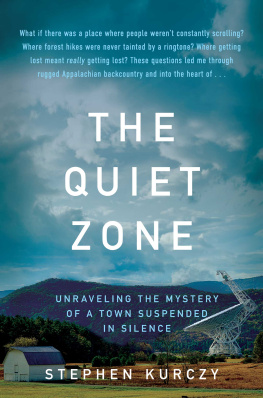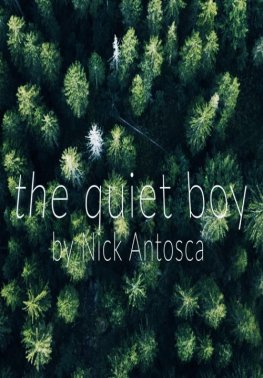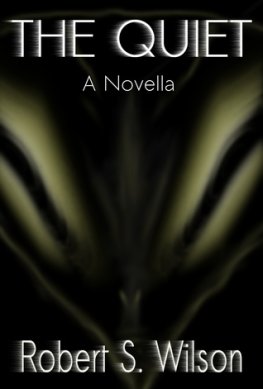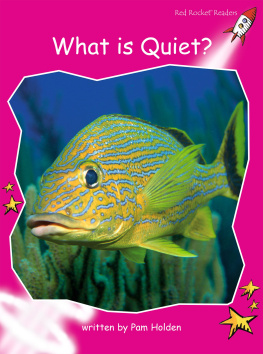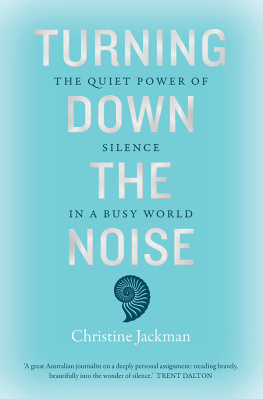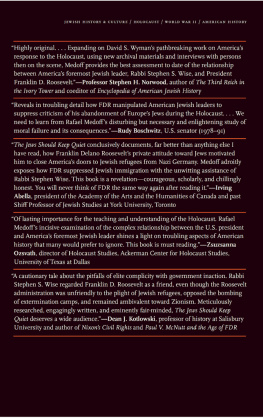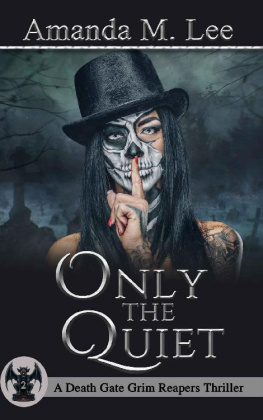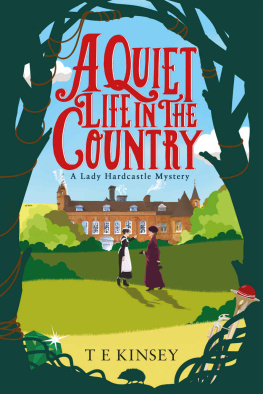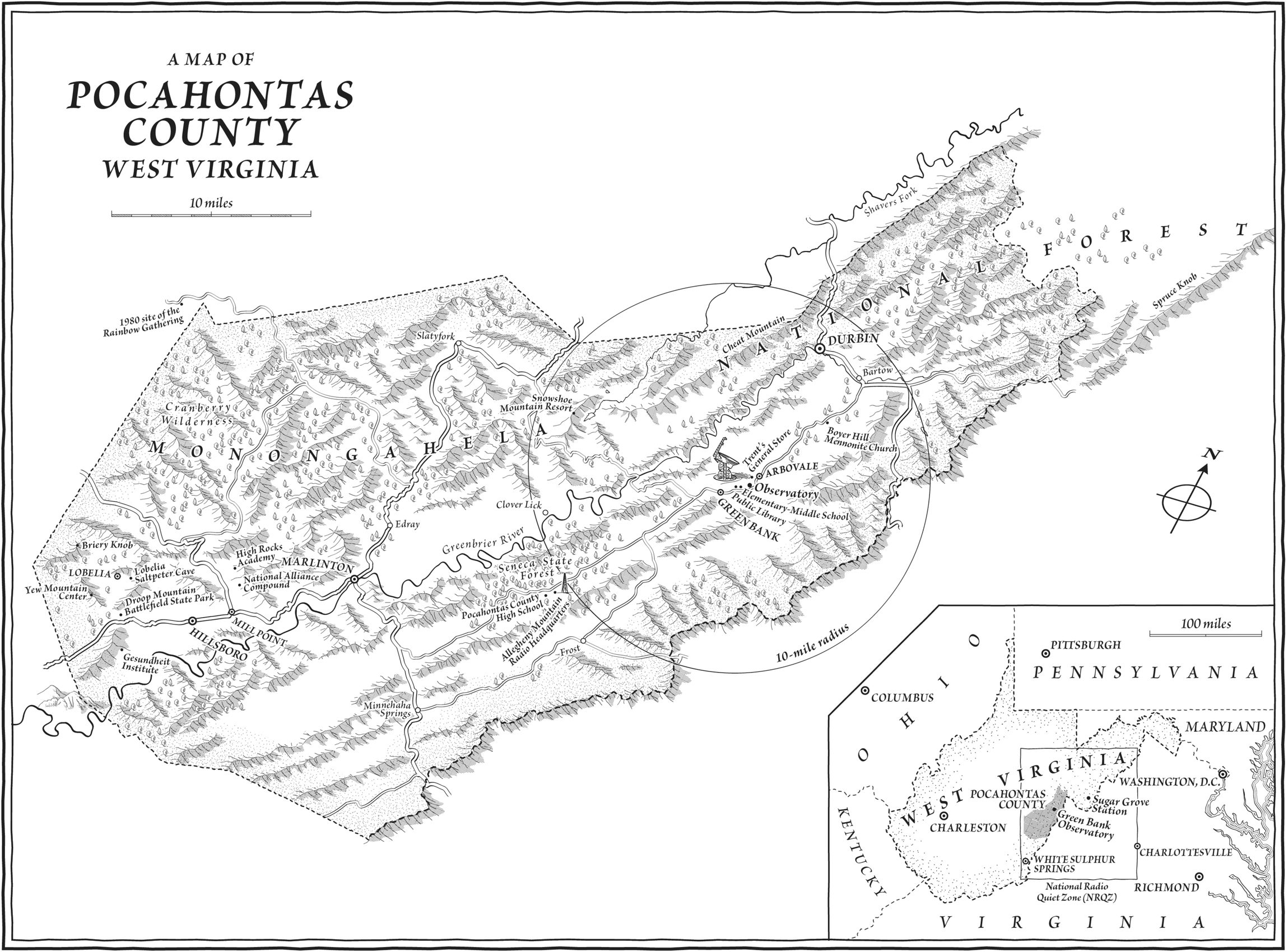THE PEOPLE OF POCAHONTAS COUNTY made this book possible, and I owe them my deepest gratitude. They gave me lodging. They gave me food. They gave me their stories. Everyone named in this book, and many more unnamed, has my thanks.
Bob and Elaine Sheets provided guidance and nourishment. Betty Mullenax let me hover by her register at Trents while I bugged her for hours. Jaynell Graham was generous with her time and always willing to entertain my questions, even if she didnt like where they were leading. Tony Byrd and Becky Sheets were among many families who extended their table to me. Bob Martin sat for many beers and many more tales. Bob and Ginger Must trusted me, and for that I am honored. Thanks to Jerry Dale, David Jonese, and Jeff Barlow for explaining the challenges of law enforcement in the Quiet Zone. I thank De and Linda Thompson for helping me understand another side of the county, for taking me into the depths of the earth, and for showing me how to forage ramps. Among the areas many inspiring teachers and educators, I want to thank Sarah Riley, Laurel Dilley, Greg Morgan, Ira Brown, Kristi Tritapoe, and Joanna Burt-Kinderman for speaking with me. I also thank Allen Johnson, a tireless and courageous champion for Appalachia.
At the Green Bank Observatory, thanks to director Karen ONeil for allowing me to wander her facilitys hallways pestering her employees. A huge thanks to Mike Holstine for his patience with my many questions and for once letting me borrow a dongle so I could get on wired internet. Thanks to Jay Lockman for his ability to dumb down radio astronomy without making me feel dumb. Paulette Woody gave me parenting advice; Carla Beaudet taught me the difference between a ferret and a ferrite; and Chuck Niday demonstrated how to be a smooth radio jockey. Bob Anderson, Galen Watts, Wesley Sizemore, Hanna and Dane Sizemore, and so many more people were gracious in explaining their work. I am impressed with the entire staff and their efforts to expand human understanding of the cosmos.
At the National Radio Astronomy Observatory in Charlottesville, thanks to Anthony Beasley, Kenneth Kellermann, and archivist Ellen Bouton, who helped me sift through folders in the archives and enthusiastically hunted down answers to my questions. At the Robert C. Byrd Center for Congressional History and Education at Shepherd University, archivist Jody Brumage also dug up dusty boxes that provided illuminating details.
I want to thank Diane Schou, Sue Howard, and others in Green Banks electrosensitive community who spoke with me. For their sake as well as for astronomy, I hope the National Radio Quiet Zone continues to be recognized as a valuable resource. Thanks also to the family and friends of Marianne Roberts.
I would also like to acknowledge the help of David Pringle, as much as I disagree with what he stands for. He spoke with me for many, many hours and openly shared about his role in the white nationalist movement.
Thanks to David Helfand for his encouragement, and to two additional faculty at Columbia University who provided crucial support. First, Terry Thompson accepted me into the Knight-Bagehot Fellowship at Columbia. Once there, Professor Samuel G. Freedman begrudgingly allowed me to take a coveted seat in his book-writing seminarbegrudgingly, because my initial book idea was so half-baked. He showed no mercy in critiquing my writing, which was a great gift. For years afterward, his steadfast enthusiasm for The Quiet Zone pushed me onward, even when my own morale was flagging.
Thank you to my literary agents, Larry Weissman and Sascha Alper, who took a chance on an unpublished author. They were excited from the start to learn more about Green Bank.
Thanks to Jessica Sindler, my first editor at Dey Street Books, who had an incredible ability to see the narrative thread through my bloated drafts. She brought a big-picture vision to this project, which included lining up the talented cartographer Mike Hall to create a beautiful map. Hilary McClellen, fact-checker extraordinaire, saved me from potential embarrassment. Thanks also to editor Nick Amphlett, who deftly led the manuscript across the finish line. I appreciated his patience and even-keeled nature through my many last-minute changes.
My aunt Kathleen Brown and my good friend Nate Paluck suffered through early drafts and provided generous feedback. They and other friends and family endured many rants from me about the Quiet Zone and the publishing process.
My parents have always been a source of unwavering support, and their faith in me is surely why I had the confidence to embark on this endeavor. They also provided a lot of child care, which allowed me time to work.
When I first drove to West Virginia with Jenna, we had only been dating for several months, and she could hardly have guessed what she was signing up for. I thank her for being a constant supporter, yet critical; for encouraging me to make extra calls, while dragging me out of rabbit holes; for reading more drafts than she would care to remember, yet always being willing to read another. Her patience with this project is underscored by the fact that we got married and had two children before the book was published. Shes never asked me to get a cellphone, and for that I am also grateful.
THE BULK OF THIS BOOK was reported from in-person interviews, but I also relied on many media articles, journals, and books.
For the history of the Green Bank Observatory, I benefited immensely from But It Was Fun: The First Forty Years of Radio Astronomy at Green Bank (2007) by Felix J. Lockman et al. Lockmans Great Courses series on radio astronomy (2017) was a wonderful backgrounder on the field. I also drew information from Open Skies: The National Radio Astronomy Observatory and Its Impact on US Radio Astronomy (2020) by Kenneth I. Kellermann et al.
History of Pocahontas County, West Virginia 1981, published by the Pocahontas County Historical Society, provided an exhaustive chronicle of the area. The Pocahontas Times archive was also an invaluable resource. John OBriens memoir At Home in the Heart of Appalachia (2001) helped me better understand the culture. I gleaned insights from Life Without Mercy: Jake Beard, Joseph Paul Franklin, and the Rainbow Murders (2014) and The Third Rainbow Girl: The Long Life of a Double Murder in Appalachia (2020). Henry Rauchs research for the Journal of Spelean History (2018) revealed much about the strange case of Peter Hauer. Helen Zumans memoir Mating in Captivity (2018) brought me inside the Zendik Farm.
On William Pierce, the National Alliance, and the white supremacist movement in America, I am indebted to Leonard Zeskinds Blood and Politics (2009), Mel Aytons Dark Soul of the South (2011), and Richard A. Serranos One of Ours (1998). The Southern Poverty Law Centers online archives were a constant reference. Further context into the modern white nationalist movement came from Everything You Love Will Burn (2018) by Vegas Tenold, Bring the War Home (2018) by Kathleen Belew, and Rising Out of Hatred (2018) by Eli Saslow. I also drew details from Robert S. Griffins controversial The Fame of a Dead Mans Deeds (2001) and Kelvin Pierces memoir Sins of My Father (2020), which was the source of the FBI field reports.
On tech addiction and cellphones, sources included Nicholas Carrs

